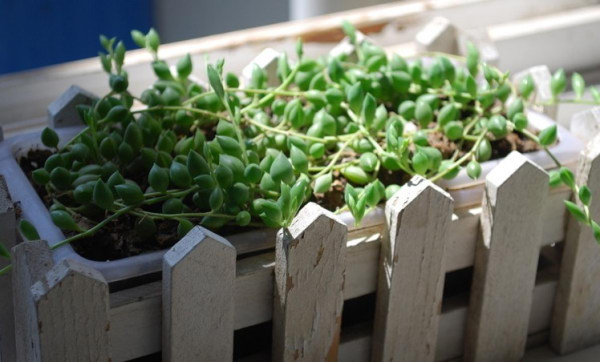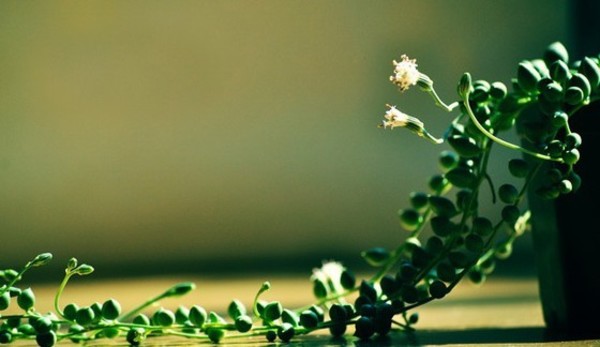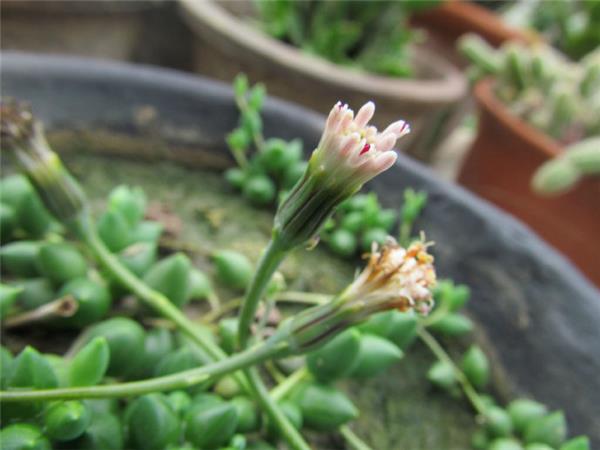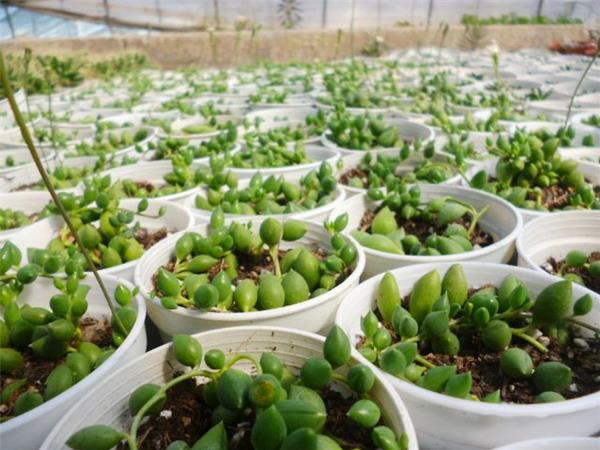Culture methods and matters needing attention of lover's tears of succulent plants
Although lover's tears belong to succulent plants that are relatively easy to feed, if they are not cultivated properly, then these "lover's tears" are likely to die in the basin before they fall, or become shrunk and less moving.

The growth habit of lover's tears
Lovers like loose and fertile soil rich in organic matter. It grows best in the environment of warmth, high humidity and strong scattered light. Avoid shade, high temperature and humidity. Prefer semi-shade, sun exposure may burn beads, too weak light will not grow strong. High temperature and high humidity should be avoided in summer, otherwise it is easy to rot stems and die. Potted flowers can be cultivated in the shade of rain protection. After autumn, the plants will resume growth, increase light and topdressing liquid fertilizer.

Culture methods and matters needing attention of lover's tears
1. Because the lover's tears are fleshy and juicy, they are more hardy. Therefore, in the process of cultivation, we should water less. In the hot and dry season, you can often spray water on the leaves and branches of the plant, so as to maintain the green degree of the whole plant. As lover tears like semi-overcast environment, we should create a good growth environment for it.
2. Because the root system of lover's tears is relatively shallow, it should be planted in a shallow basin. In order to increase the permeability and filtration of the basin, a piece of coarse pottery can be placed on the bottom of the basin and covered with a layer of coarse sand or fine cinder. Some rotten leaves and sand can also be added to the cultivation soil of lover's tears to improve the air permeability.
3. In the spring and autumn when lover's tears are growing vigorously, we should pay attention to applying thin fertilizer many times, and often spray nitrogen fertilizer and potassium dihydrogen phosphate with a concentration of 1-3 ‰ on the leaves of lover's tears, so as to make the lover's tear beads fuller and more ornamental.
4. Sex is warm and humid, cold-tolerant (low temperature of 0 ℃ in Jianghuai region), high temperature, and the optimum temperature is about 20 ℃ ~ 28 ℃. Both high temperature and low temperature grow slowly, especially when the temperature is more than 30 ℃, it is almost dormant. Less watering and fertilization should be done, otherwise the roots are easy to rot, which is also one of the keys to successful cultivation.

5. There are few diseases and insect pests, and aphids are one of them in spring, which should be wiped off or sprayed with 1500 times omethoate in time, while mites in summer and autumn should be killed with 1000 times triclofenac. Pay attention to ventilation and increase leaf humidity, can reduce the infection of mites.
6. Lover's tears can be inserted and propagated. Cut the branches directly and bury them in the soil to take root, and it will take about two to three weeks to produce new buds. Many friends can't raise them well, or they can't grow roots after cutting off the branches and slowly dry up and die. The main reason is that the method of burying is not right. After each breeding observation, Hua you found that the best way is to cut off the branches and lay them on the surface of the soil, and then spread a layer of soil on it, so that all the stems of lover's tears are buried, or even the beads are buried. Then pour a little water, let the soil stick to the lover's tears, do not have to worry about ventilation and budding problems.

The leaves of lover's tears are full and small, round and lovely, with a good role in beautifying the bedroom. Choose and buy exquisite flowerpots to plant them, or put them on the balcony or hang them indoors, can play a pleasing effect.
- Prev

How to cultivate and care for different varieties of succulent plants in August
How to cultivate and care for different varieties of succulent plants in August
- Next

[potted plants] how to correctly water and fertilize potted plants
[potted plants] how to correctly water and fertilize potted plants
Related
- Wuhan Hospital Iron Tree Blooming Result Was Instantly Frightened by the Gardener Master
- Which variety of camellia is the most fragrant and best? Which one do you like best?
- What is the small blue coat, the breeding methods and matters needing attention of the succulent plant
- Dormancy time and maintenance management of succulent plants during dormancy
- Minas succulent how to raise, Minas succulent plant pictures
- What are the varieties of winter succulent plants
- How to raise succulent plants in twelve rolls? let's take a look at some experience of breeding twelve rolls.
- Attention should be paid to water control for succulent plants during dormant period (winter and summer)
- Watering experience of twelve rolls of succulent plants
- Techniques for fertilizing succulent plants. An article will let you know how to fertilize succulent plants.

